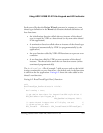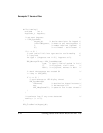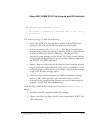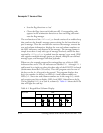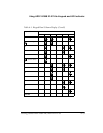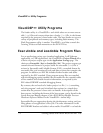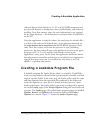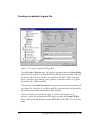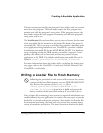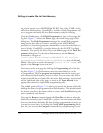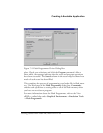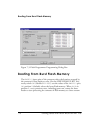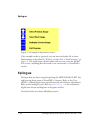
Getting Started with ADSP-BF548 EZ-KIT Lite 7-3
Creating A Bootable Application
code and data sections directly in L1, L2, and L3 (DDR) memories and
provide such features as breakpoints, data variable display, and statistical
profiling. Note that memory space for extra information is not required
on the target hardware —the information is retained within VisualDSP++
on the PC.
Once the application is ready for release, the need arises for a loader file—
a version of the code and initialized data—to be stored permanently on
the
target platform and be accessible to the ADSP-BF548 processor’s boot
code. Once this is done, each time the processor is reset (including
power-on), the boot code will copy each application section to the appro-
priate part of L1, L2, or L3 memory and transfer control to the
application’s entry point. In this form, the application itself must ensure
that all processor controllers and devices are initialized to an appropriate
state (if their post-reset state is not sufficient) since there is no Visu-
alDSP++ to perform that service.
Creating a Loadable Program File
A loadable program file (loader file for short) is created by VisualDSP++
in an extra step added to the end of the typical compile, assemble, and link
steps of a project build. In the extra step, the loader utility reads the code
and data segments from the executable file produced by the linker and
writes the segments to a new file in a format that the processor’s boot
loader understands. The loader utility’s operation is configured by options
set on the Loader pages of the Project Options dialog box associated with
a project. The Loader pages (also called loader property pages) are labelled
Options, Kernel, and Splitter and accessed as nodes in the Project
Options tree control. Figure 7-1 shows the Loader: Options page.



